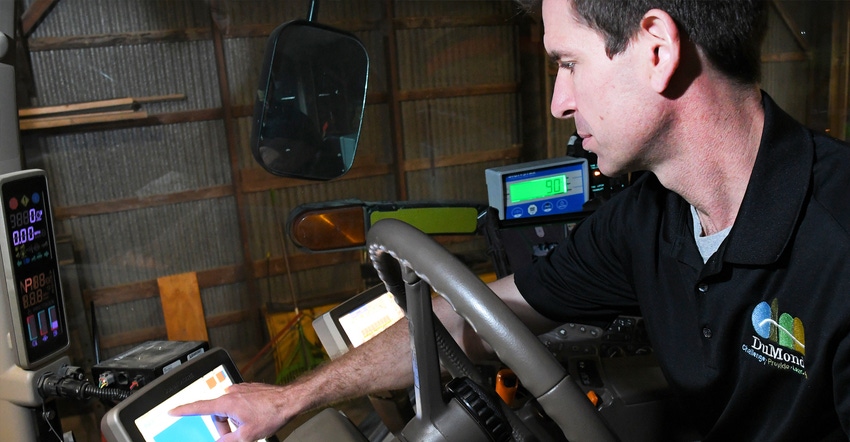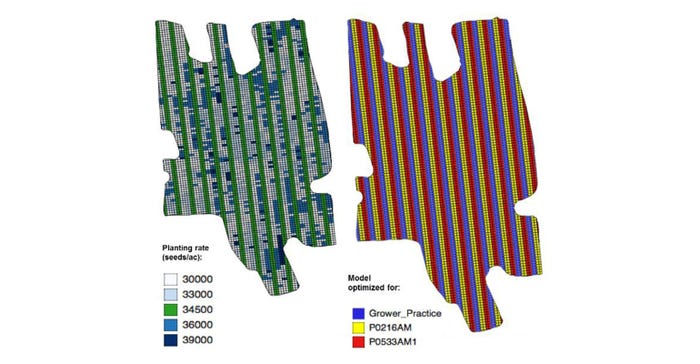May 2, 2017

By Kara Dunn
“It was Todd DuMond’s idea to create a New York-specific algorithm based on high-resolution soils data,” says Savanna Crossman, precision ag research project leader with the New York Corn and Soybean Growers Association. (See “Farming inch by inch has a precision payback”)
The association received New York Farm Viability Institute funding to develop the algorithm in cooperation with Cornell University. So what’s an algorithm, you wonder? In short, it’s software/equation instructions that tell your planter’s monitor/controller how much to plant of what and where — down to the inch.
“Precision agriculture is one more technology tool farmers can blend with their own knowledge and experience to improve operational efficiency and profitability,” explains David Grusenmeyer, NYFVI executive director.
Dr. Michael Gore of the School of Integrative Plant Science at Cornell University and Ph.D. candidate Margaret Krause are refining the equations that drive a variable-rate seeding prescription model that will help increase corn and soybean production efficiency. The algorithm uses high-resolution soil mapping and half-acre grid soil sampling, plus elevation, curvature and slope data to optimize seeding rates in zones across planter width and on the go.

DATA-MELDING: Researchers are blending planting rate data maps (left) with hybrid placement maps (right). Source: N.Y. Corn and Soybean Growers Association

“Quite often, driving up the seeding rate doesn’t drive up profit,” says Crossman. The first version of the model was tested on more than 500 acres during 2016 on four farms. Over time, the project will test the model on 2,500 acres on all 14 farms participating in the project. DuMond Farms has been a contributor since the project started in 2013.
To date, the project has collected data in one average, one wet and one drought year. That should help to offset the weather’s influence within the algorithm, says Crossman.
Working with split-planter data
To examine the hybrid placement effect, the project is working with split planters. A split-planting in a 117-acre field resulted in the highest average yield from 27,000 seeds per acre and the lowest average yield from 42,000 seeds per acre.
Planting rate explained only 3.1% of the yield difference. Slope, elevation and curvature data explained 15.5%.
The Cornell model then added the field’s 14 soil characteristics. That explained 45.6% of the variation. Soil nutrients also help explain yield variation in most fields.
Dramatic gains and cost savings are to be made if growers can manage the extreme variations in their landscape, she contends. “Our 2015 demonstration showed that the most productive ground can support equally high yields at seeding rates 4,000 to 5,000 below standard practice.”
Crossman is looking to add more acres to the data collection and model design. As an incentive for farmers to join, a cost-sharing program covers 50% of the grid sampling expense on designated research fields. For details, contact Crossman at 802-393-0709, or email [email protected].
Dunn writes from her farm in Mannsville, N.Y.
You May Also Like




